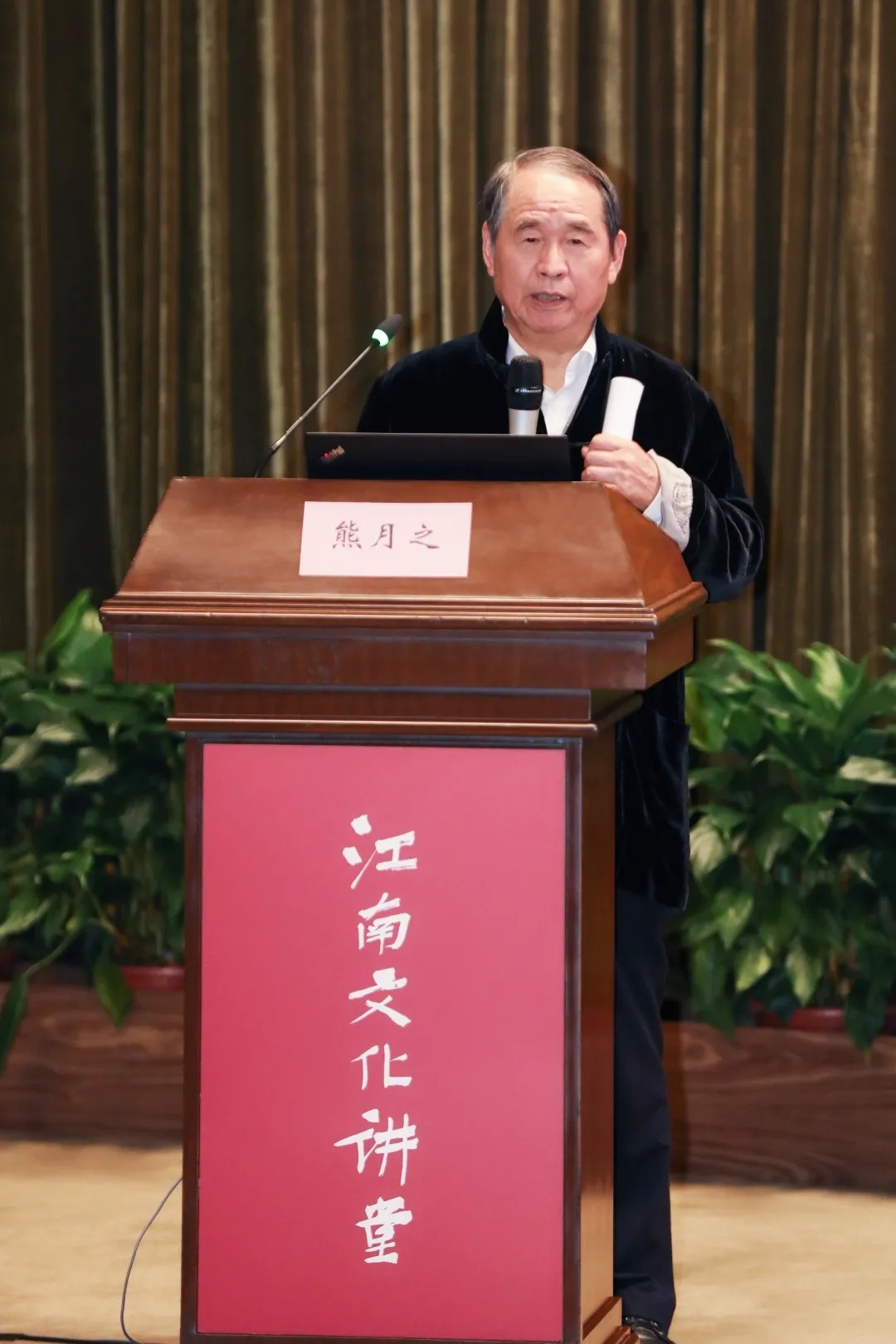Xiong Yuezhi: Openness and Inclusiveness of Jiangnan Culture

Historically, China’s social, economic and cultural center had long been the Central Plains. After the fall of the Jin Dynasty, there occurred a prolonged human migration from the war-stricken north towards the southern areas, a historical event known as “Yi Guan Nan Du” (“the large-scale migration of northern civilization and people to the South”), resulting in the confluence of the empire’s northern and southern cultures as well as the acceleration of the economic and cultural development of southern China. By the fall of the Song Dynasty, Jiangnan (literally South of the Yangtze River) had become the national economic and cultural center. The many historical floods of human migration have evidently demonstrated the openness and inclusiveness of Jiangnan, specifically the openness to the northern and “interior” population.
Jiangnan was also open to the world overseas. Historically, Jiangnan was the country’s major player in both domestic and international trade. Examining the historical rise and fall of different ports in Jiangnan, we can not only capture the significant role of the region in integrating, economically and culturally, the different parts of China, which had long been unified politically, but also come to understand Jiangnan was a crucial trade point between the empire and the outside. So international communication is another aspect to Jiangnan’s openness.
Jiangnan was not only open towards foreign goods, but also open-minded to foreign minds. In the late Ming and early Qing dynasties, scholars from Jiangnan led the whole country in absorbing and introducing Western learning to the East (China). Jiangnan scholars, including Xu Guangqi, Yang Tingjun, Li Zhizao, Wang Xichan, Fang Yizhi and Mei Wending, were prominent examples in that cultural movement and thanks to their effort, a very agreeable atmosphere for the exploration of Western learning was formed in this particular part of the empire.
Since the “modern era,” Shanghai has been by far the best showcase of Jiangnan’s openness. In that era, the vast majority of Shanghai's population were immigrants, 80% of whom were from the other parts of Jiangnan. As we know, people are cultural creators and cultural vehicles. When they migrate, they bring with them their cultural traditions and practices. The “modern era” Shanghai was, therefore, the brainchild of the open and inclusive Jiangnan culture. In many ways, Shanghai has even reinvented Jiangnan culture.
It was mainly people from Jiangnan who were first engaged in modern industry in Shanghai. Many of the earliest founders of modern education in Shanghai were also people from Jiangnan, leading the gradual institution of largely western educational practices in China. For instance, Liu Haisu was the representative figure of Jiangnan scholars who were devoted to the research and study of western painting and sculpture in the modern era. For another example, the people who first introduced the western concepts of park and garden management to China also came from Jiangnan.
Jiangnan intellectuals took the lead in absorbing and disseminating western learning, for example, science and technology, the social contract concepts, evolution, and Marxism in particular. Not coincidentally, the region accounted for the largest portion of Chinese scholars studying abroad then.
The Kuang Fang-Yen Kuan (literally the “abroad” languages house) in Shanghai made remarkable achievements in foreign language teaching, producing a multitude of talents proficient in one or more foreign tongues. Jiangnan Manufacturing Bureau and its “translation house” were world-famous for developing Western-type ships and cannons and translating Western books. The house’s 59 members were mainly from Jiangsu and Zhejiang (two major provinces in Jiangnan). Jiangnan, and Shanghai in particular, produced a greater number of diplomats for the “modern era” China, a fact that was especially relevant to the region’s openness.
In China, Jiangnan was also the first region to provide free schools, so as to make it possible for the children from economically-disadvantaged families to have access to education. Shanghai, a city of predominantly immigrants, not only accepted immigrants, but also enabled them to work, study and even raise their own social status.
In the first place, the modern-era Jiangnan got access to the western world mainly through Shanghai, which was initially forced to open up. Admirably, Jiangnan made a virtue of the necessity: the then Jiangnan intellectuals and inhabitants in general were most earnest and diligent in learning from the advance western culture, including its material, institutional, intellectual and moral dimensions. In the meanwhile, they never lost confidence in Chinese traditions and were long active and firm in resisting the aggression of foreign powers. They persevered in shaping a distinctive Jiangnan culture with Chinese characteristics, Chinese presence and Chinese style.

